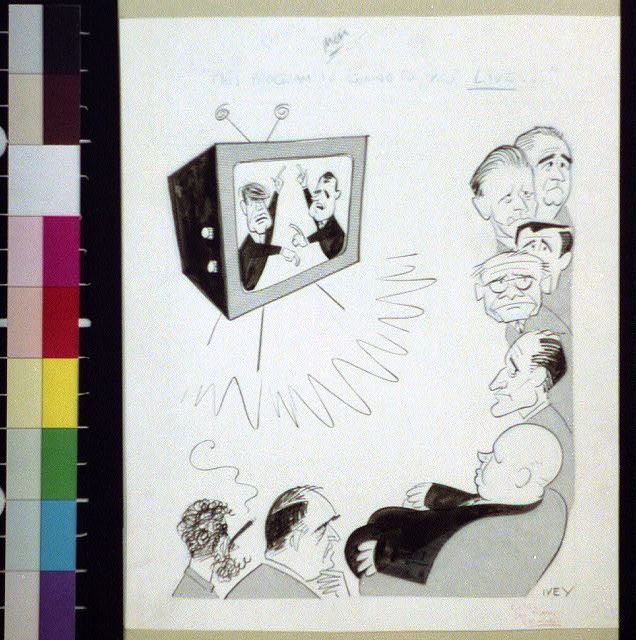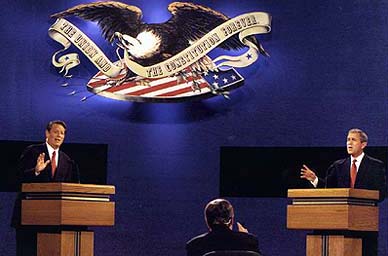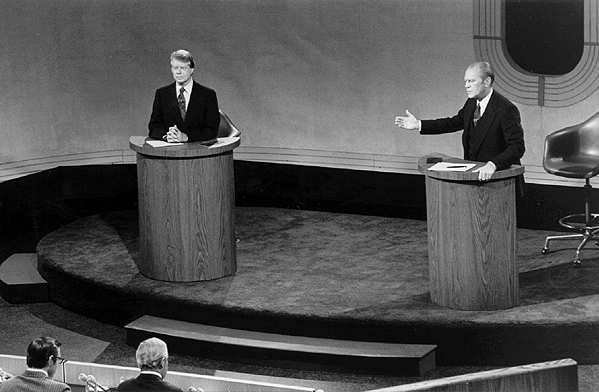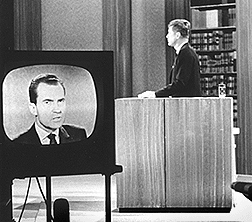




This website is intended to be a resource for high school students and teachers and college students in introductory courses in history and political science. It is intended to compliment secondary and primary sources that are available in print but it also provides easy access to audio and visual media that, if not unique to a digital format, are more readily available on the web. Therefore, the goal of this site is to provide, as much as possible, the necessary materials to conduct a thorough classroom investigation of TV debates.
Another reason for using digital media is the belief that most students today are “web-savvy” and tend to be much more engaged in the learning process when dealing with web-based activities than those that focus primarily on print. This is not to say that books and articles still do not have their place and indeed classic works such as “The Making of the President” series provide a depth of treatment and analysis that would be hard to duplicate on the web.
The question of access is of paramount importance. The digital materials associated with this site are available to anyone with access to a computer. It is safe to assume that typical high schools and small colleges do not have the variety and scope of materials that are so readily available on the web. Indeed, one of the marvels of new media is that many of the same materials are available to both Harvard scholars and high school freshmen.
It is important to note, however, that research has shown that students tend to use the web indiscriminately. 1 Though the materials related to this site are clearly prescribed, web exploration is certainly encouraged but with caveats regarding the reliability of websites. It probably goes without saying that, whenever students are given open-ended web assignments, they need to be warned about the proliferation of unreliable sites. Of course this is not new in that similar admonitions are also necessary with regard to print sources. However, the sheer magnitude of the amount of available web materials makes such precautions even more urgent. 2
Though the cost of making the debate transcripts searchable may be prohibitive, the rewards would be considerable. Searchability would enable students to ascertain how often certain issues were discussed and, most importantly, would allow students to contrast the candidates’ views on specific issues. References in the transcripts to specific issues could be linked to brief summaries of the issues that could provide not only explanations but also historical context. Links to newspaper archives, such as ProQuest, would provide access to contemporary accounts of the debates as well as opinions available in op ed columns. These would be useful to students whose knowledge of these issues is sparse at best.
The “elasticity” of websites is a trait that can be helpful. Because text and materials are readily added or deleted the site has the potential to be constantly evolving. Experience demonstrates that websites, once developed, tend to be static because the creators rarely change them. However, the potential for growth of a learning site such as this one affords many exciting possibilities. An obvious long-term advantage is that new debate materials can be added. For example, nothing is available now on the 2004 debates but, as materials become available, they can be added to the site. Also, a site that includes lesson plans provides the opportunity of periodically up-dating and improving those plans.
Another feature that can be added is a bulletin board. The site could invite users to write their recollections of specific debates. This could include not only historians and political commentators but also interested citizens who would be encouraged to share their memories and thoughts on the debates they have witnessed. An element of interactivity could be added by inviting users to email questions and comments to the webmaster.
1 T. Mills Kelly. “For Better or Worse? The Marriage of the Web and Classroom,” The Journal of American History and Computing Vol. III, No. 2 (August 2000), 7-8.
2 Ibid., 8.
Home*Introduction*Scope*Review*Structure*Technical